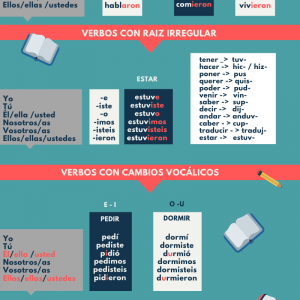For students that are taking Spanish classes, the exams and qualifications are widely known. In this particular article, we will cover these aspects that give prestige and official recognition to learning a language. If you are interested in Spanish lessons or even already started them and want to know more about how you...
Gender in Spanish can determine meaning
As you already know, Spanish nouns have genders. This can be difficult for people whose mother tongue doesn’t have genders, but it makes learning Spanish extra confusing when you discover that sometimes changing the gender of a word can also change it’s meaning! Don’t worry, this doesn’t happen with all words, not even with most,...
DELE EXAM PREPARATION FROM HOME
Almost everyone who studies Spanish will one day learn about the possibility of obtaining an international certificate, which confirms knowledge of Spanish at a certain level (from A1 to C2). The certificate is issued by the Cervantes Institute based on the results of the DELE international examination. At present, it is not the only...
Ser vs. Estar — Which One to Use?
The verbs SER and ESTAR are the main connecting words in Spanish, but they are often confused because both verbs translate as “to be”. Nevertheless, each one has an absolutely different meaning. If you have ever been confused by SER vs ESTAR, then this post will help you with a list all of the most...
10 words that change meanings in Spanish from singular to plural.
Today’s quick Spanish class we are going to talk about 10 words that change meanings depending on if they are being used in plural or singular. Learning Spanish can be difficult, but some of these words are used the same way in English, which will make them easier to learn! Celo / Celos Celo is...
Ser bueno vs Estar bueno
In Spanish there are a multitude of false friends that can cause you misunderstandings. Be careful when using the word bueno or buena. It is not the same to be bueno or buena than to be bueno buena. To be good means to have a good behavior or to perform a profession well. For example:...
Pretérito Indefinido en español / Indefinited Preterite
In Spanish we use four verb tenses in Indicative mode to talk about the past. In this infographic I leave you how the Indefinite Preterite (Pretérito Indefinido in Spanish) is conjugated, the equivalent in some cases to the past simple in English. My recommendation, as Spanish tutor, to not to be wrong when using this...
Some binomials in Spanish you’ll want to use sooner or later
Binomials or word pairs are idioms in Spanish with the peculiar characteristic of having two words from the same grammatical class like nouns, adjectives, pronouns, etc. There are different types of binomials, some of which are based on sound, synonyms and antonyms, repetition, etc. and though they aren’t always binomials in both languages, it is still...
- 1
- 2








